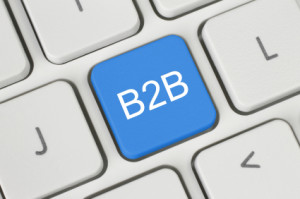by gabriel_sales | Sep 26, 2013
 In Malcom Gladwell’s book Outliers, he makes the claim that for anyone to become an expert at something, it takes 10,000 hours of practice.
In Malcom Gladwell’s book Outliers, he makes the claim that for anyone to become an expert at something, it takes 10,000 hours of practice.
From Outliers:
“The emerging picture from such studies is that ten thousand hours of practice is required to achieve the level of mastery associated with being a world-class expert—in anything,” writes the neurologist Daniel Levitin.” — p. 40
Since the book was published, there has been a lot of criticism of Gladwell’s book from people citing professional athletes or Olympians who reached a high level of accomplishment in their field without the prerequisite 10,000 hours of practice. Last month, however, Gladwell responded to critics in a New Yorker editorial and claimed the rule still applies to activities involving a high degree of cognitive complexity:
“The point of Simon and Chase’s paper years ago was that cognitively complex activities take many years to master because they require that a very long list of situations and possibilities and scenarios be experienced and processed. There’s a reason the Beatles didn’t give us “The White Album” when they were teen-agers. And if the surgeon who wants to fuse your spinal cord did some newfangled online accelerated residency, you should probably tell him no.
It does not invalidate the ten-thousand-hour principle, however, to point out that in instances where there are not a long list of situations and scenarios and possibilities to master—like jumping really high, running as fast as you can in a straight line, or directing a sharp object at a large, round piece of cork—expertise can be attained a whole lot more quickly. What Simon and Chase wrote forty years ago remains true today. In cognitively demanding fields, there are no naturals.”
At Gabriel Sales, we wholeheartedly agree with Gladwell and believe this concept can be applied to the world of B2B sales and marketing.
As a sales and marketing outsourcing company with over 13 years of experience specializing in B2B, we were an early adopter of marketing automation. After implementing a marketing automation platform for ourselves and seeing the dramatic results it brings, we have done over a dozen more implementations for our clients.
Our status as an early adopter means that by the end of 2012, we reached the prerequisite 10,000 hours of experience needed to be classified as world-class marketing automation experts.
Current Challenges with Marketing Automation Implementation
In a July 2013 report from BtoB, companies were asked to name their top challenges to adopting marketing automation. One of the top five responses included the complexity of marketing automation software itself (23%).
After more than a dozen implementations, we understand the software and know the best practices as well as what to avoid. Over the years, we have learned new ways to optimize the software and retired old tactics that were not producing results. As a sales outsourcing organization, we also understand how to integrate your sales process with your marketing automation platform to track buyer lifecycles, nurture leads, identify buyer personas and more.
We have seen that companies that try to do this on their own can take up to three years to see any results. By bringing on Gabriel Sales to help with your marketing automation implementation, you can start to see results within a year—saving yourself countless hours that would be better spent generating new revenue and serving your customers.
To learn more about marketing automation implementation, you can download our Marketing Automation Implementation Checklist. To learn more about the consulting we provide as marketing automation experts, you can visit our services page or contact us.
by gabriel_sales | Sep 24, 2013
 For B2B companies, the search for new sales leads seems to be an endless task. As a B2B sales and marketing outsourcing company, we believe many companies have difficulty with this because they try to approach their lead generation programs by starting with lead generation.
For B2B companies, the search for new sales leads seems to be an endless task. As a B2B sales and marketing outsourcing company, we believe many companies have difficulty with this because they try to approach their lead generation programs by starting with lead generation.
We believe successful lead generation programs come second to pipeline development.
As a metaphor, think of your sales process like a roadmap. There is an obvious destination in mind (closing), and you have to follow a clearly defined path to get there (discovery, education, verification, consideration of alternatives). The path is your sales pipeline. You need to do the groundwork laying pavement and putting up street signs, so when someone crosses your path, they won’t get lost or change directions.
Using this metaphor, if you try to generate leads without first developing your pipe, you are essentially throwing your prospects out into the middle of the desert and telling them to find their own way. The flaw in this strategy should be obvious.
By taking the time to develop your pipeline, you make the entire buying process easy for your prospects, which will help you earn their trust.
To develop your sales pipe, you need to clone your sales process by developing digital marketing content that helps guide your prospects through their buying process. This means creating content that demonstrates your status as an industry thought-leader to help build credibility. It also means creating marketing content to address any objections that commonly come up during the sales process—allowing your prospects to educate themselves digitally.
With your pipeline in place, lead generation is dramatically simplified. Your prospects can now see the path you wish them to take clearly laid out tin front of them and are appreciative of your help along the way.
Summary: By developing your pipeline, you pave the way for your prospects to become leads.
For more educational content on B2B lead generation, click here. If you are interested in learning more about the pipeline development or lead generation programs we provide, you can visit our services page.
by gabriel_sales | Sep 19, 2013
 As a B2B sales and marketing outsourcing company, we constantly keep up to date with the biggest trends and challenges B2B professionals are facing today. In terms of sales and marketing, we consistently see that the biggest challenge for B2B companies in 2013 is generating more B2B sales leads.
As a B2B sales and marketing outsourcing company, we constantly keep up to date with the biggest trends and challenges B2B professionals are facing today. In terms of sales and marketing, we consistently see that the biggest challenge for B2B companies in 2013 is generating more B2B sales leads.
While wanting more leads is a rational approach to producing more revenue, we can’t help but wonder if there isn’t more to this story than meets the eye. From our perspective, it is not lead generation that derails most B2B companies, but rather lead nurturing and sales pipe development.
Here are some statistics to help explain our point of view:
- 5% of your market is ready to buy at any given time (Selling Power Magazine)
- 80% of leads are passed to sales before they are ready to engage (Marketing Sherpa)
- 70% of mishandled leads buy from a competitor (Forrester)
By looking at these statistics, you can see that might not be getting leads that is the problem. It is what you do with them once you have them. If 80% of your leads are being mishandled and 70% of mishandled leads buy from a competitor, it is no wonder you feel like you need more leads. You are essentially throwing more than half of the ones you have in the trash.
Rather than generating more B2B sales leads, what B2B companies need is to develop strategies for sales pipeline development and lead nurturing.
Many of the leads that come into your pipe are still figuring out the exact problem they have or are very early in their buying process. Asking these prospects if they would like a custom demo or free trial right away is likely to confuse or even annoy them. By sending out early-stage, non sales-y educational content, you can help guide these prospects through their own discovery and education, which is called lead nurturing. This way, when your lead decides it is time to buy, you are top of mind and have become a trusted industry resource.
This type of lead nurturing and sales pipeline management does not have to be expensive or complex. You simply need to map out your sales process and create marketing content to fit each stage of your buyers’ buying cycle, then push the content at the appropriate time (using your marketing automation solution), track engagement and finally, bring in the closer when buying signals have been shown.
If this seems complicated or overwhelming, here are several resources to help you get started:
We help B2B companies with lead generation, lead database management and sales pipeline development & much more. If you would like to learn more about the services we offer, you can visit our services page.
If you have any questions, please feel free to contact us.
by gabriel_sales | Sep 18, 2013
 Generating leads for business to business companies is no longer as simple as attending a trade show or advertising in an industry trade magazine. Business to business lead generation now requires reaching your prospects online and offering them quality marketing content to engage with in exchange for their contact information.
Generating leads for business to business companies is no longer as simple as attending a trade show or advertising in an industry trade magazine. Business to business lead generation now requires reaching your prospects online and offering them quality marketing content to engage with in exchange for their contact information.
A mature business to business lead generation strategy is comprised of three parts: digital content marketing, search engine optimization and marketing automation. These three aspects are interrelated and success in implementing one will ultimately lead to success with the others. We will now give a brief overview of each aspect and discuss how they work together.
- Digital Content Marketing
In order to generate a lead, you need to get your prospect’s contact information. In order to get your prospect’s contact information, you need to offer something in exchange. That something is marketing content. What form the marketing content takes can vary greatly (i.e. blog posts, press releases, newsletters, white papers, webinars, videos, slideshows, checklists, etc.), but it needs to be valuable in some way to your ideal customer. People find things valuable that are entertaining, helpful, newsworthy or inspirational. Most of your B2B content will find value in its helpfulness, so checklists, educational webinars and informative white papers are a good place to start.
2. Search Engine Optimization
The amazing digital marketing content you create will do you no good unless people can find it. This is where intelligent SEO comes in. In order to make sure search engines like Google can find your content and get it to your prospects for lead generation, you need to optimize each piece of content you create with the most relevant and regularly searched keywords. You also need to optimize your website’s infrastructure to make it easier for search engines to navigate your site quickly (i.e. pagination, categorization, tagging).
3. Marketing Automation
While not a B2B lead generation strategy per se, marketing automation helps you keep track of and manage leads as they come into the pipe. Because you are casting a much wider net with content marketing and SEO than you did with tradeshows or industry magazines, you need to be able to track a large number of prospects and know where each came from. With marketing automation, you are able to see how and when prospects are engaging with your content (i.e. did they find your white paper from a pay-per-click ad or an email campaign?)—giving you insights into where each prospect is in his or her buying cycle and how to tell sales to proceed. Because marketing automation tracks content engagement in this way, you are also able to determine which of your lead generation strategies are most effective and refine your process for the future.
For more on business to business lead generation, you can read Top 10 Tactics for More Effective B2B Lead Generation You Can Implement Immediately. If you would like to learn about the business to business lead generation services we offer, you can visit our services page.
If you have any questions, please feel free to contact us.
by gabriel_sales | Sep 17, 2013
 Today, marketing is about getting quality information to the right people, at the right time, in the right place. It is more about education and offering value than it is flashy graphics or catchy slogans. In order to use your B2B marketing strategy as a lead generation system, you need to know who your ideal customer is, where he/she hangs out online and how he/she likes to interact with digital content.
Today, marketing is about getting quality information to the right people, at the right time, in the right place. It is more about education and offering value than it is flashy graphics or catchy slogans. In order to use your B2B marketing strategy as a lead generation system, you need to know who your ideal customer is, where he/she hangs out online and how he/she likes to interact with digital content.
Any B2B lead generation system needs to start with an ideal customer profile in mind.
An ideal customer profile details the demographics of your target audience in terms of geographical location, job title, industry, company size, etc. By having a clear understanding of the exact type of person you are targeting, it is much easier to create quality marketing content that will speak to his or her needs. For example, are you targeting C-level executives or junior IT personnel? Do you want to talk to the fast-paced New York businessman or the small-town, southern gentleman? Knowing the difference will affect the length of your content, your tone of voice and your conceptual complexity.
The next steps in developing your lead generation system are creating your content and then getting that targeted content to your ideal prospects. There are many ways to do this; obviously, buying lists and executing email marketing campaigns can work. You should also push all of your marketing content through your company website and blog as well as the various social media channels (Facebook, Twitter, LinkedIn, Google+).
However, don’t only post your content to your own social media profiles. You can significantly increase your reach by sharing content in relevant “groups” or “circles”, making sure you are using hashtags when appropriate and ‘tagging’ your content with keywords. Another strategy most B2B companies forget about is guest-blogging. By asking to publish an article for an industry-leading blog, you gain the chance to be positioned as an expert, which will inspire trust and ultimately, generate leads.
This is a brief overview of using content marketing as a lead generation system. If you would like more detailed content, you can download our new white paper, called The New Rules for B2B Sales & Marketing in 2013. To learn more about the lead generation and content marketing services we provide, you can visit our services page.
If you have any questions, please feel free to contact us.
 In Malcom Gladwell’s book Outliers, he makes the claim that for anyone to become an expert at something, it takes 10,000 hours of practice.
In Malcom Gladwell’s book Outliers, he makes the claim that for anyone to become an expert at something, it takes 10,000 hours of practice.




